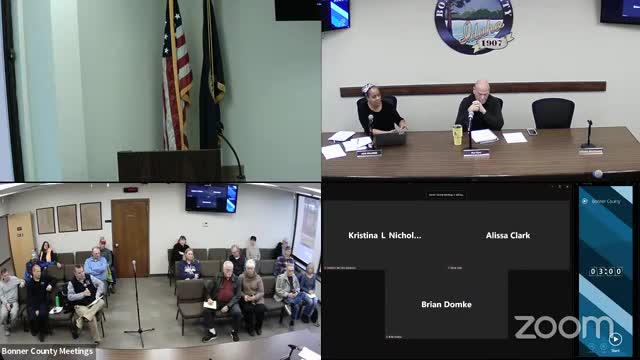County leaders demand urgent reforms for EMS budget crisis
November 15, 2024 | Bonner County, Idaho
This article was created by AI summarizing key points discussed. AI makes mistakes, so for full details and context, please refer to the video of the full meeting. Please report any errors so we can fix them. Report an error »

During a recent government meeting, officials addressed the pressing issue of financial sustainability within the Emergency Medical Services (EMS) department. Concerns were raised about the ongoing reliance on county funds to cover EMS overtime costs, highlighting a need for a more sustainable financial model.
One official emphasized the importance of moving away from temporary solutions, stating, \"We don't have any more Band Aids to put on it.\" The discussion pointed to the necessity for EMS to become self-sustainable, as it operates as its own taxing district. The current approach of injecting funds into the EMS budget without addressing underlying issues was criticized as insufficient.
The meeting also revisited a previous discussion from June or July, where a significant allocation of $1.5 million was made to support EMS operations. Officials acknowledged that while these funds provided temporary relief, they did not address the root causes of the financial strain. \"Hard conversations\" about the department's financial health were deemed essential to prevent future crises.
To enhance oversight and prevent similar situations, the introduction of internal controls was proposed. These controls would serve as early warning systems, alerting officials when EMS funds drop below critical thresholds. This proactive approach aims to foster accountability and ensure that financial challenges are addressed before they escalate.
Overall, the meeting underscored a commitment to reforming the financial structure of EMS, with a focus on sustainability and transparency moving forward.
One official emphasized the importance of moving away from temporary solutions, stating, \"We don't have any more Band Aids to put on it.\" The discussion pointed to the necessity for EMS to become self-sustainable, as it operates as its own taxing district. The current approach of injecting funds into the EMS budget without addressing underlying issues was criticized as insufficient.
The meeting also revisited a previous discussion from June or July, where a significant allocation of $1.5 million was made to support EMS operations. Officials acknowledged that while these funds provided temporary relief, they did not address the root causes of the financial strain. \"Hard conversations\" about the department's financial health were deemed essential to prevent future crises.
To enhance oversight and prevent similar situations, the introduction of internal controls was proposed. These controls would serve as early warning systems, alerting officials when EMS funds drop below critical thresholds. This proactive approach aims to foster accountability and ensure that financial challenges are addressed before they escalate.
Overall, the meeting underscored a commitment to reforming the financial structure of EMS, with a focus on sustainability and transparency moving forward.
View full meeting
This article is based on a recent meeting—watch the full video and explore the complete transcript for deeper insights into the discussion.
View full meeting